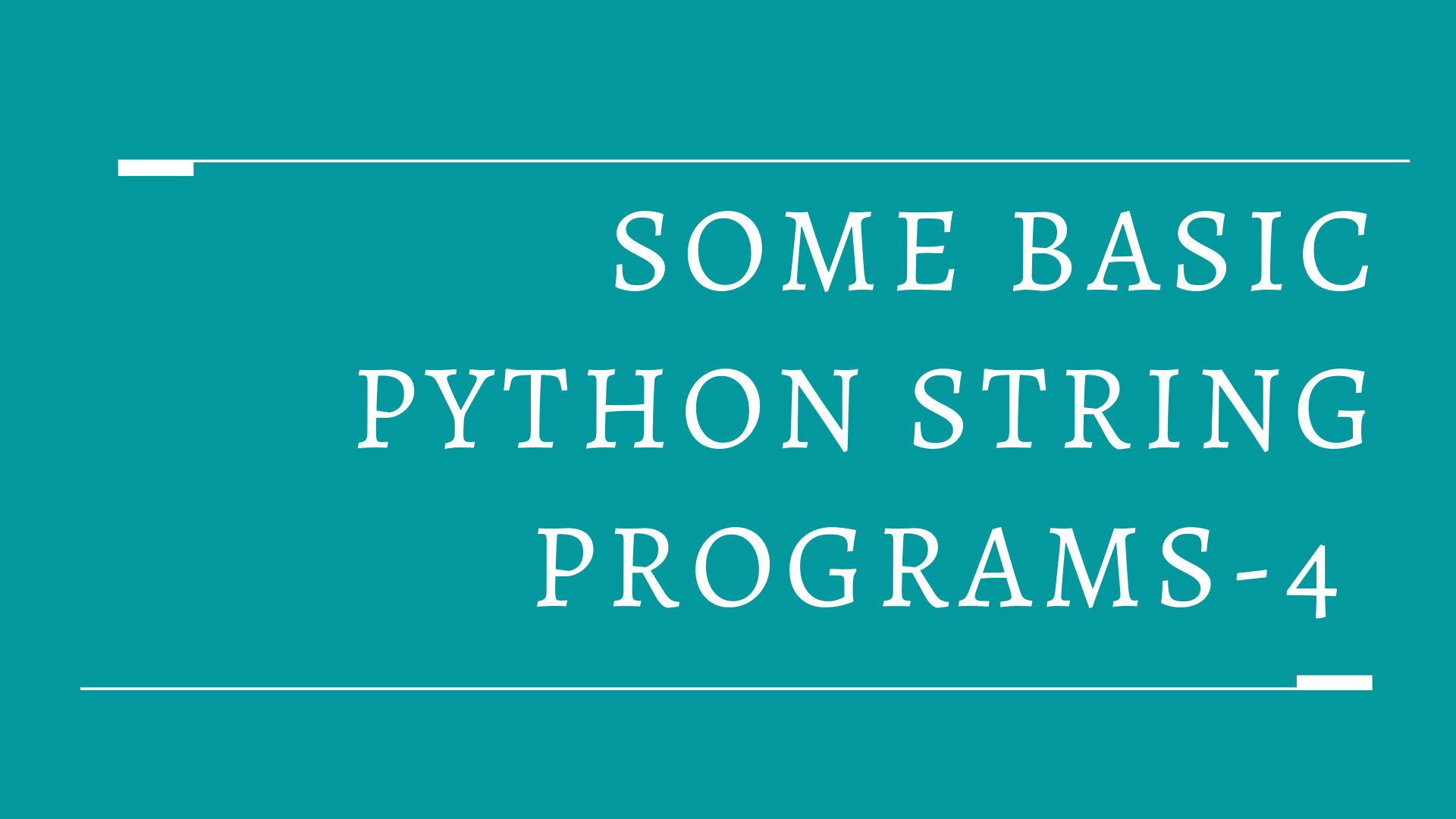Python program to check if the string is ASCII
string = "Beta Python: Python for U"
#using all() and ord()
if all(ord(ch) < 128 for ch in string):
print(f"{string} is ASCII string")
else:
print(f"{string} is not an ASCII string")
#Output: Beta Python: Python for U is ASCII string
#using lambda and encode()
if lambda ch: len(ch) == len(ch.encode()):
print(f"{string} is ASCII string")
else:
print(f"{string} is not an ASCII string")
#Output: Beta Python: Python for U is ASCII string
- The built-in ord() function returns the Unicode code point representation of the character passed.
- The all() built-in method returns True If all the elements in the iterable passed are true else it returns False.
- Python treats everything as an object and objects are always true in python. However, null values, None, 0, empty data types are observed as false in python.
- The format() built-in string method returns a formatted representation of the string controlled by the format specifier. The replacement fields are expressions enclosed in curly brackets in a format string. They are evaluated at run time and then formatted.
- The built-in encode() function returns the encoded version of the string according to the specified encoding.
- The lambda function is a function that is defined without a name. It can have any number of arguments but only one expression as it is a small function having a single line of code. The expression is evaluated and returned.
Python program to convert a String to Binary
str1 = "Beta Python: Python for U"
#using ord()
str2 = ''.join(format(ord(ch), 'b') for ch in str1)
print(str2)
#Output: 10000101100101111010011000011000001010000111100111101001101000110111111011101110101000001010000111100111101001101000110111111011101000001100110110111111100101000001010101
#using bytearray()
str3 = ''.join(format(i, 'b') for ch in bytearray(str1, encoding = 'utf-8'))
print(str3)
#Output: 10000101100101111010011000011000001010000111100111101001101000110111111011101110101000001010000111100111101001101000110111111011101000001100110110111111100101000001010101
- The built-in ord() function returns the Unicode code point representation of the passed character.
- The ‘b’ in format() function is used to represent the binary format of the string.
- The join() built-in string method combines all the elements of iterables passed and returns a concatenated string.
- The bytearray() built-in method returns a bytearray object which is a mutable sequence of integers in the range of 0 to 256.
- The built-in len() function returns the number of elements present in a container.
Python program to convert hex string to decimal
hex_no = 'F'
dec_no = int(hex_no, 16)
print(dec_no)
#Output: 15
- The built-in int() function returns an integer object from a number in the given base.
Python program to extract digits from the string
str1 = "aa2bb3cc4eee7"
#using list comprehension
str2 = ''.join([ch for ch in str1 if ch.isdigit()])
print(str2)
#Output: 2347
#using filter() and lambda
str3 = ''.join(filter(lambda ch: ch.isdigit(), str1))
print(str3)
#Output: 2347
- The isdigit() built-in string method returns True if all characters in the string are digits, else, it returns False.
- The filter() built-in method filters the given iterable with the help of a function that tests each element in the iterable to be True or False.
Python program to extract only characters from the string
str1 = "Beta Python: Python for U"
#using list comprehension
str2 = ''.join([ch for ch in str1 if ch.isalpha()])
print(str2)
#Output: BetaPythonPythonforU
#using filter() and lambda
str3 = ''.join(filter(lambda ch: ch.isalpha(), str1))
print(str3)
#Output: BetaPythonPythonforU
- The isalpha() built-in string method returns True if all characters in the string are alphabets, else, it returns False.
Python program to extract all characters except letters and numbers
str1 = "@Beta1& #Python2:3 #Python2 for4 $U5 6 |"
#using list comprehension, isalpha() and isnumeric()
str2 = ''.join([ch for ch in str1 if (not ch.isalpha()) and (not ch.isnumeric())])
print(str2)
#Output: @& #: # $ |
#using filter(), isalpha() and isnumeric()
str3 = ''.join(filter(lambda ch: (not ch.isalpha()) and (not ch.isnumeric()), str1))
print(str3)
#Output: @& #: # $ |
#using list comprehension and isalnum()
str4 = ''.join([ch for ch in str1 if not ch.isalnum()])
print(str4)
#Output: @& #: # $ |
#using filter(), lambda and isalnum()
str5 = ''.join(filter(lambda ch: not ch.isalnum(), str1))
print(str5)
#Output: @& #: # $ |
- The isnumeric() built-in method returns True if all the characters in a string are numeric characters, else, it returns False.
- The isalnum() built-in method returns True if all the characters in the string are alphanumeric (either alphabets or numbers), else, it returns False.
Related Posts-

